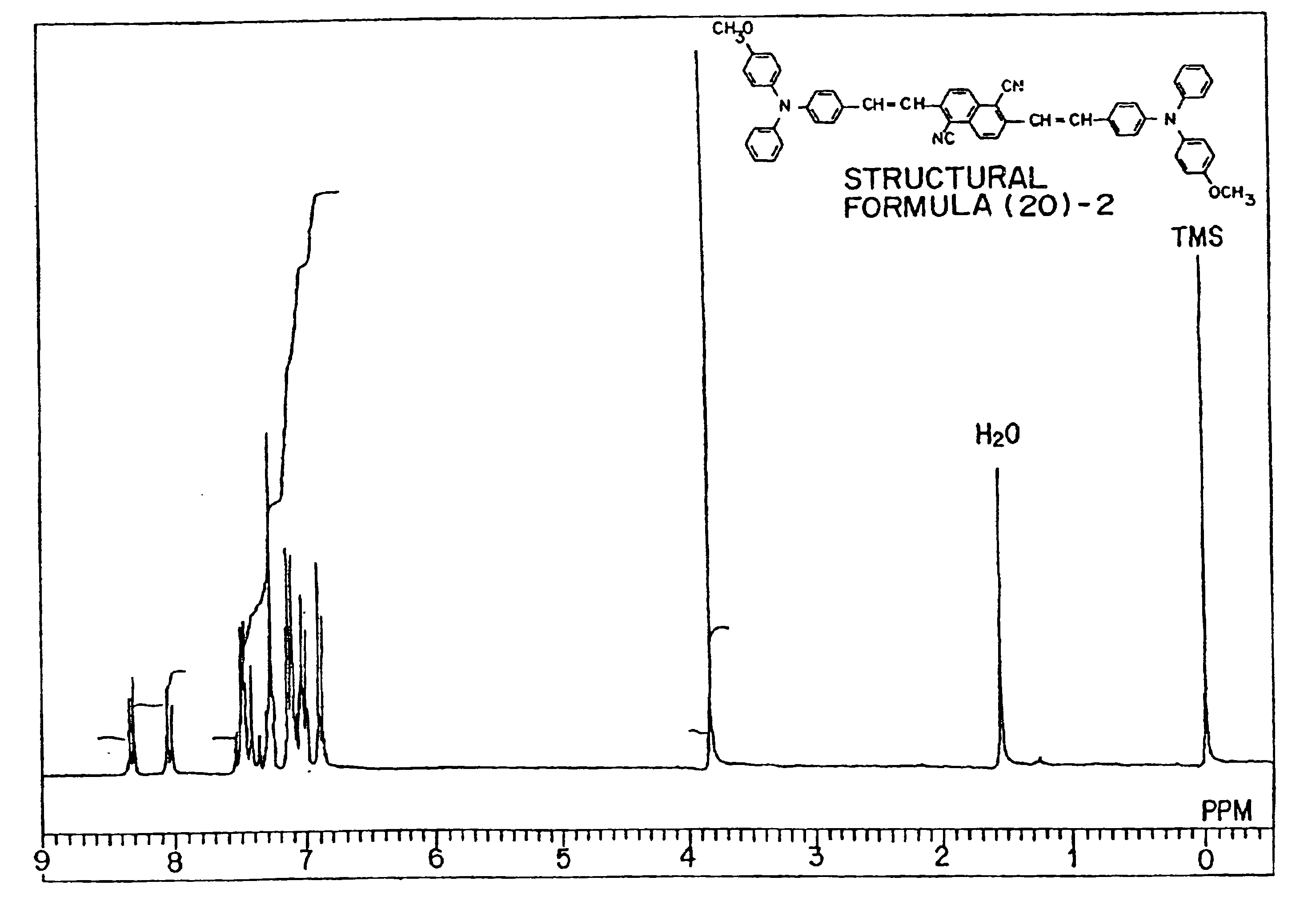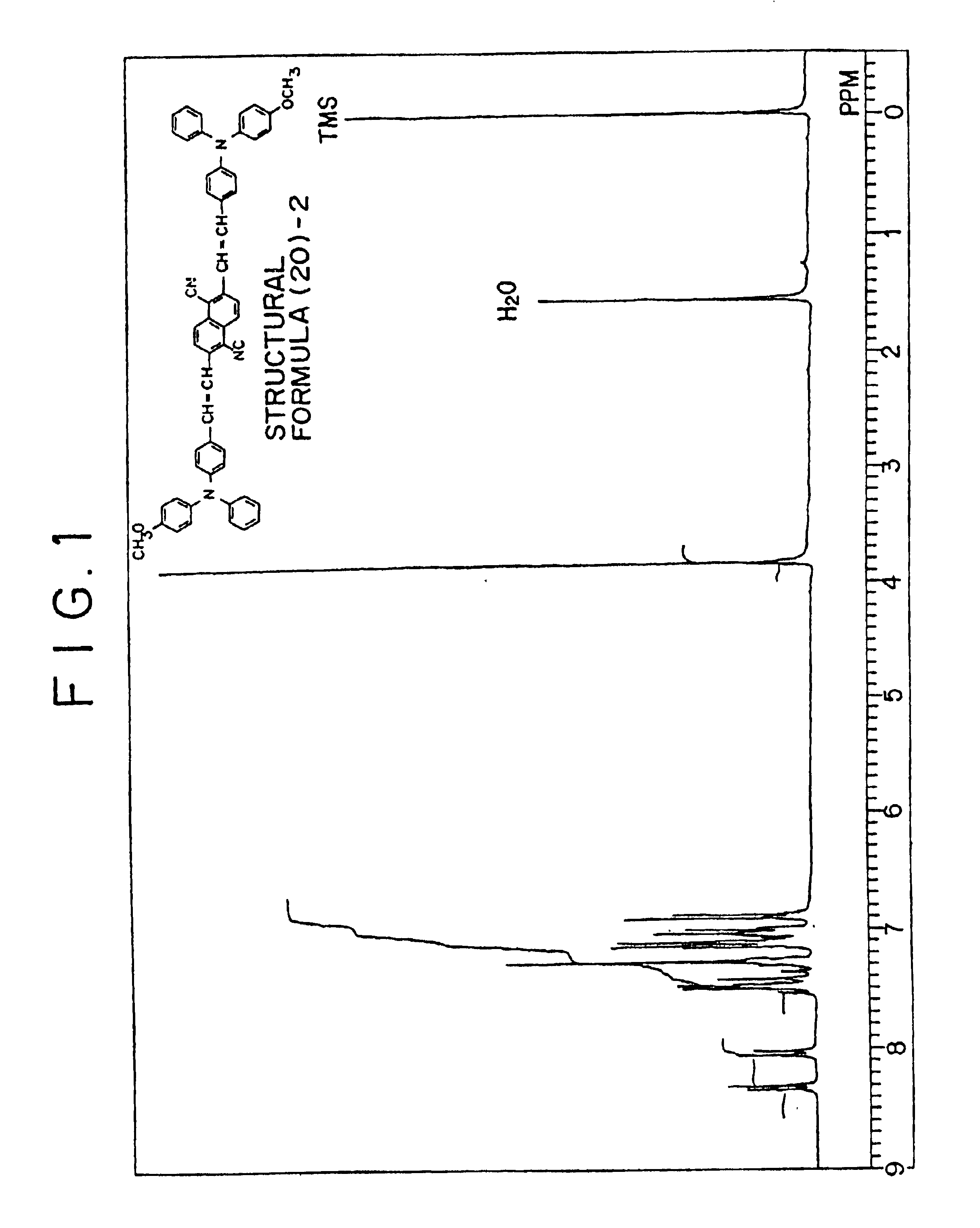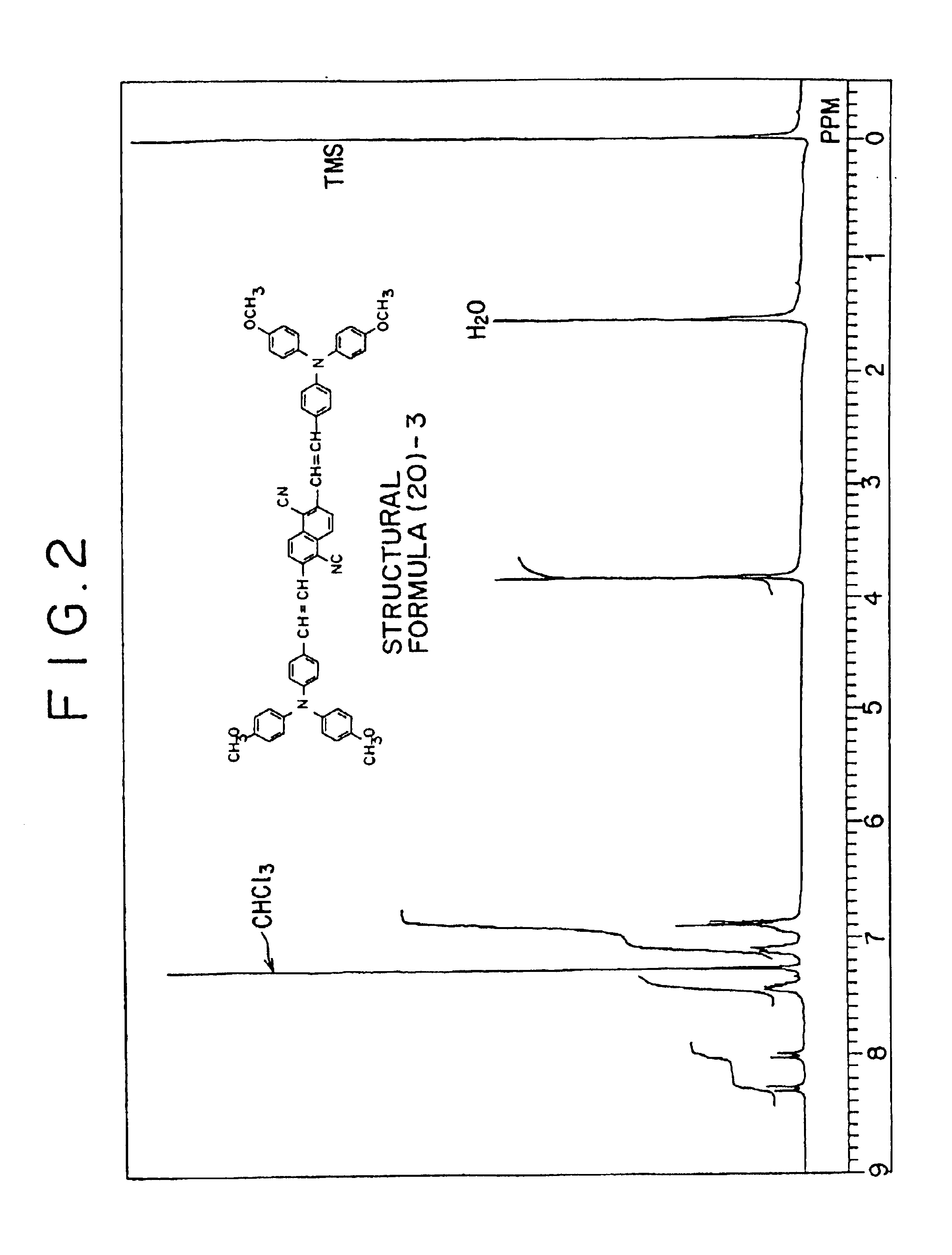Bis(aminostyryl)naphthalene compound, synthesis intermediate thereof, and process for production thereof
a technology of naphthalene compound and synthesis intermediate, which is applied in the direction of group 5/15 element organic compound, transportation and packaging, instruments, etc., can solve the problem of never establishing the process for their efficient production
- Summary
- Abstract
- Description
- Claims
- Application Information
AI Technical Summary
Benefits of technology
Problems solved by technology
Method used
Image
Examples
example 1
Synthesis of bis(aminostyryl)naphthalene Compound Represented by the Structural Formula (20)-2)
In a reactor was placed 10.2 mmol of sodium hydride (in mineral oil). It was suspended in 10 mL of anhydrous tetrahydrofuran (THF) under a nitrogen atmosphere. With stirring at room temperature, the reactor was given dropwise 80 mL of solution containing 1.72 mmol of diphosphonic ester (represented by the structural formula (41)-1) in 1:1 mixed solvent of anhydrous tetrahydrofuran and anhydrous dimethylformamide (DMF). The reactor was further given 30 mL of solution containing 1.27 g (4.19 mmol) of 4-[N-phenyl-N-(4-methoxyphenyl)amino]benzaldehyde (represented by the structural formula (39)-1) in anhydrous tetrahydrofuran. The reactants were stirred for 10 hours. The reaction solution was quenched with a small amount of ice, washed with saturated aqueous solution of sodium chloride, and dried with anhydrous sodium sulfate.
The reaction product was purified by silica gel chromatography (WAK...
example 2
Synthesis of bis(aminostyryl)naphthalene Compound Represented by the Structural Formula (20)-3)
In a reactor was placed 7.50 mmol of sodium hydride (in mineral oil) It was washed twice with hexane. It was suspended in 20 mL of 1:1 mixed solvent of anhydrous THF and dimethylformamide (DMF). The suspension, placed on an ice bath, was given dropwise over 15 minutes under nitrogen atmosphere 100 mL of solution containing 0.720 g (1.51 mmol) of phosphonic ester (represented by the structural formula (41)-1) and 1.16 g (3.61 mmol) of 4-[N,N-di(4-methoxyphenyl)amino]benzaldehyde (represented by the structural formula (39)-2) in a 1:1 mixed solution of anhydrous THF and DMF. The reactants were stirred on an ice bath for 6 hours and then stirred at room temperature for 6 hours. The reaction solution was quenched with a small amount of ice, extracted with toluene, washed with saturated aqueous solution of sodium chloride, and dried with Na2SO4. The supernatant liquid was concentrated and the ...
example 3
Synthesis of bis(aminostyryl)naphthalene Compound Represented by the Structural Formula (20)-13)
In a reactor was placed 5.15 mmol of sodium hydride (in mineral oil). It was washed twice with hexane. It was suspended in 5 mL of 3:1 mixes solvent of anhydrous THF and DMF. The suspension, placed on an ice bath, was given dropwise over 15 minutes under nitrogen atmosphere 50 mL of solution containing 0.410 g (0.858 mmol) of phosphonic ester (represented by the structural formula (41)-1) and 0.700 g (2.06 mmol) of 4-[N,N-(4-methoxyphenyl)-1-(2,3,4,5-tetrahydronaphthylamino)]benzaldehyde (represented by the structural formula (39)-3) in a 3:1 mixed solution of anhydrous THF and DMF. The reactants were stirred on an ice bath for 6 hours and then stirred at room temperature for 12 hours. The reaction solution was quenched with a small amount of ice, extracted with toluene, washed with saturated aqueous solution of sodium chloride, and dried with Na2SO4.
The reaction product was purified by ...
PUM
| Property | Measurement | Unit |
|---|---|---|
| color | aaaaa | aaaaa |
| luminescent | aaaaa | aaaaa |
| optical properties | aaaaa | aaaaa |
Abstract
Description
Claims
Application Information
 Login to View More
Login to View More - R&D
- Intellectual Property
- Life Sciences
- Materials
- Tech Scout
- Unparalleled Data Quality
- Higher Quality Content
- 60% Fewer Hallucinations
Browse by: Latest US Patents, China's latest patents, Technical Efficacy Thesaurus, Application Domain, Technology Topic, Popular Technical Reports.
© 2025 PatSnap. All rights reserved.Legal|Privacy policy|Modern Slavery Act Transparency Statement|Sitemap|About US| Contact US: help@patsnap.com



